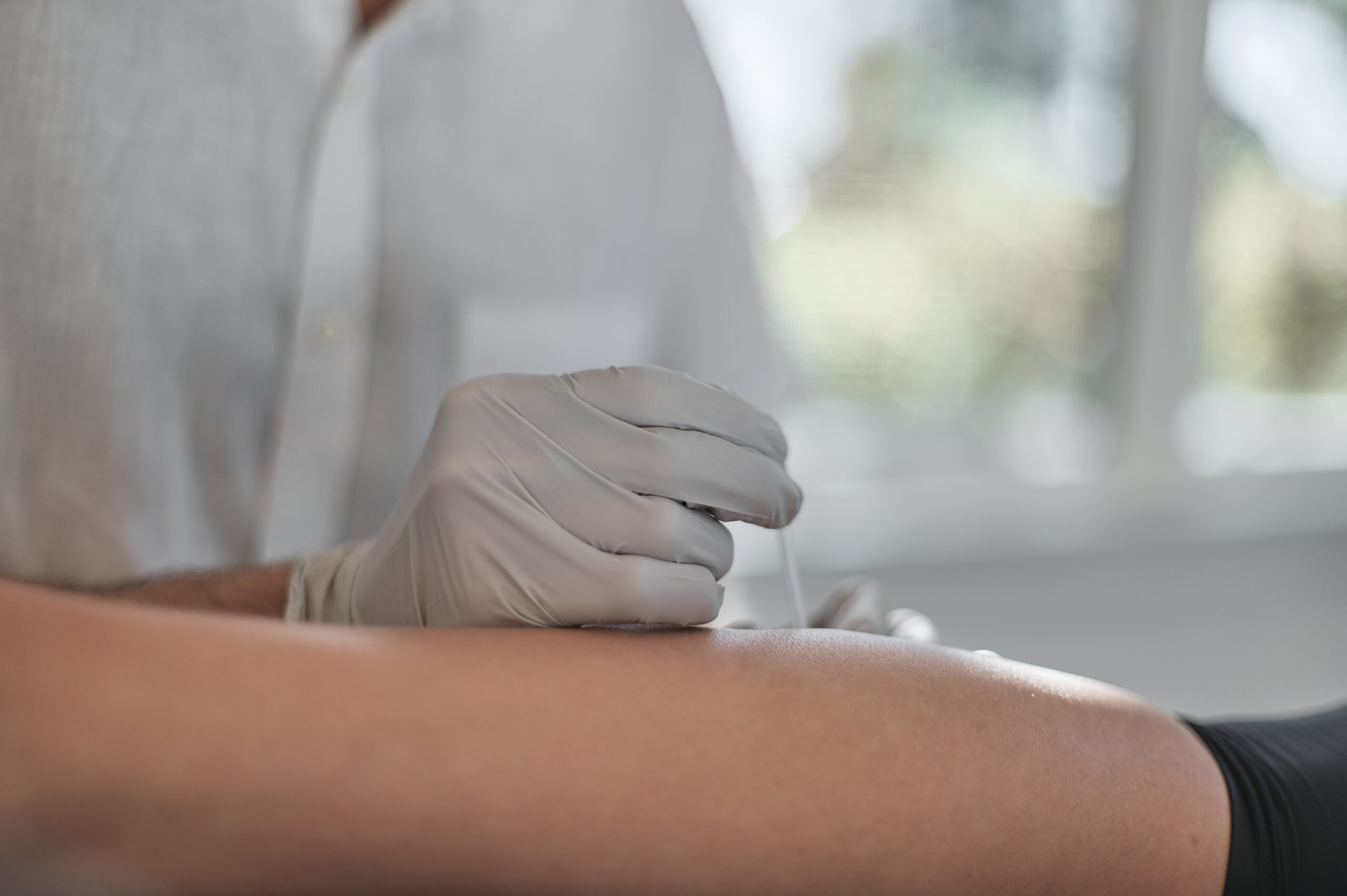The modality of dry needling is an effective tool in the treatment of musculoskeletal and neuromuscular dysfunctions. Dry needling involves the insertion of small needles that do not inject medication or fluid into the body, with the purpose of making changes within the muscle and central nervous system in order to improve function and decrease pain. Pain is a signal coming from the spinal cord via nociceptive fibers that transmit information in the dorsal horn and up to the brain. The effect of a needle placed within a muscle is the creation of action potentials within afferent neurons that also send signals through the same pathway that pain information is delivered to the brain. Therefore, this stimulus, especially when used in combination with electrical stimulation, provides new information to be delivered to the brain, blocking transmission of pain to the central nervous system. This helps to decrease pain sensation at the local tissue, along with decreasing pain signaling that may be contributing to central sensitization within the brain that can lead to chronic pain. Trigger points are taut bands of tissue that develop within the muscle due to either overuse or trauma, and lead to maladaptive changes including decreased blood flow and increased inflammatory markers. This can lead to increased pain and discomfort, and decreased efficiency of muscle function. The resultant perpetuating cycle may result in functional limitations that affect an individual’s everyday life. Dry needling may aid in increased blood flow to the muscle, decreased inflammatory markers, and improved muscle recruitment and firing through local chemical changes. Dry needling is a low-risk treatment, and may involve increased muscle soreness similar to that following a workout. However, this typically lasts less than 24 hours. Rare complications include headaches, infection, and pneumothorax. Clinicians work to mitigate risks by implementing safe practice including required, specialized training and certification, safe needle placement, use of gloves, and keeping a clean environment. Several research studies have displayed the benefits of dry needling including long-term changes. According to a recent systematic review and meta-analysis on the effectiveness of trigger point dry needling for musculoskeletal conditions², when dry needling is performed by physical therapist with the goal of reducing pain, there is moderate quality evidence to support that it is more effective when compared to other treatments including soft tissue manual therapy techniques. This review also highlights several randomized control trials that display immediate and long-term effects of dry needling including improved functional outcomes at twelve weeks. In conclusion, dry needling can be a very effective tool in treating musculoskeletal pain. Physical therapists that are well-trained in dry needling will be able to answer questions you may have regarding the treatment before you make the decision to take advantage of this modality. References
